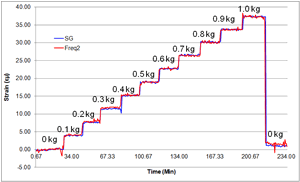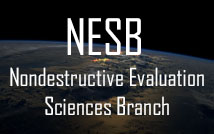MEMS Sensors
Vehicle Health Monitoring Systems (VHMS) offer the promise of greater safety of the crew and the aerospace vehicle. Yet, constraints such as cost, mass, volume, and power often prevent the inclusion of VHMS instrumentation into aerospace systems. The elimination of wiring and wiring harnesses will reduce the mass of vehicle health monitoring systems and reduce the impact of mass constraints. It is estimated that the elimination of wiring and wiring harnesses could reduce the total mass of the vehicle by 6-10%. In addition to reducing the weight, the elimination of wiring and supporting infrastructure will reduce fabrication costs. When retrofitting a structure with sensors, using wireless instead of wired sensors for VHMS applications will avoid expensive cable routing redesigns and the costs of performing safety re-certifications. In addition to the impact from extra weight, wires are prone to damage such as nicks and breaks, as well as degradation due to wear, excessive heating, and arcing. Wireless systems present a desirable option to developing specialized verification instrumentation for detecting wire faults or for retrofitting wired sensors onto existing aircraft for structural health monitoring. For these reasons, wireless micro-electromechanical systems (MEMS) sensors are a priority technology that warrants NASA's attention over the next decade. Unfortunately, existing wireless sensor systems have low data rates and require batteries, two conditions that make such systems undesirable. In contrast, high data rate systems that do not require batteries, like passive RFID sensors are very attractive.
The environment of aerospace vehicles is typically harsh, with temperature extremes ranging from cryogenic to very high temperatures. Hypersonic vehicles based on the experimental X-43 vehicle, for example, will require high temperature sensors mounted on the structure, as well as cryogenic sensors for monitoring fuel tanks. Sensors are typically located in internal spaces with limited access, making the periodic changing of batteries costly and time consuming. Furthermore, batteries do not work well in extreme temperatures. In contrast to current wireless systems, passive wireless surface acoustic wave (SAW) sensors operate without batteries across a large temperature range. The addition of orthogonal frequency coding (OFC) technology allows for more robust communications in harsh RF environments. As a result, NASA is investigating the use of OFC SAW devices for aerospace applications, because this technology could benefit a great number of NASA missions. Small, passive, wireless spread spectrum sensors will have application in ground testing as well as in high altitude long duration aircraft and spacecraft.

Surface Acoustic Wave Device with Orthogonal Frequency Coded (OFC) reflectors
 SAW OFC strain sensor versus strain gauge data
SAW OFC strain sensor versus strain gauge data


